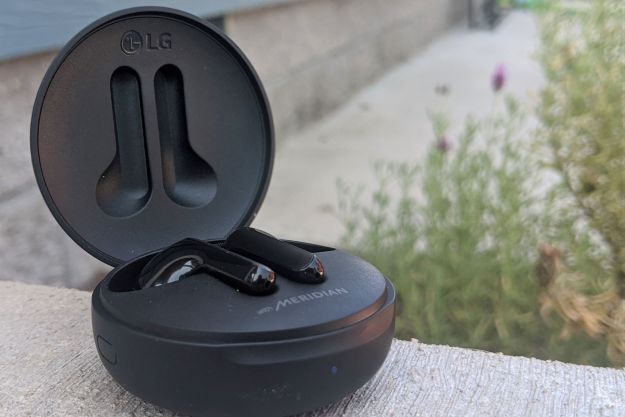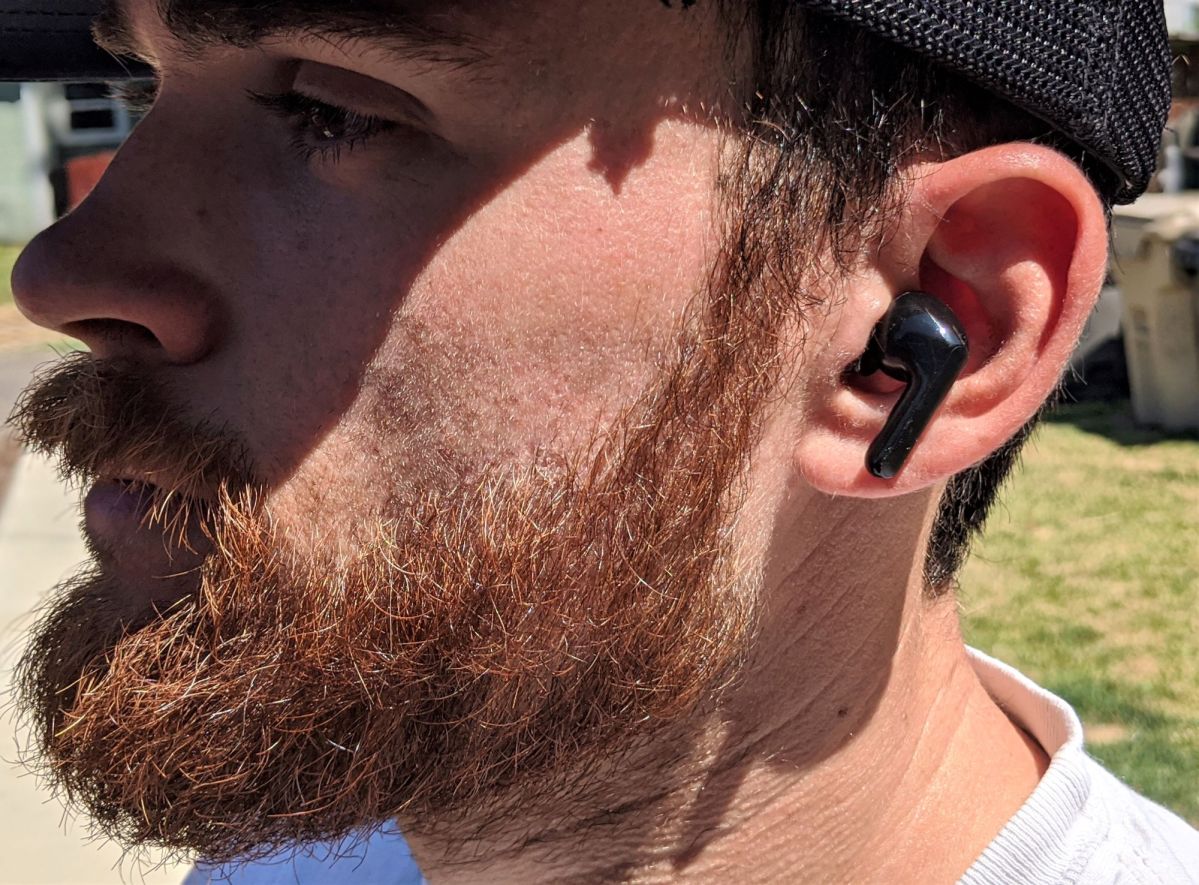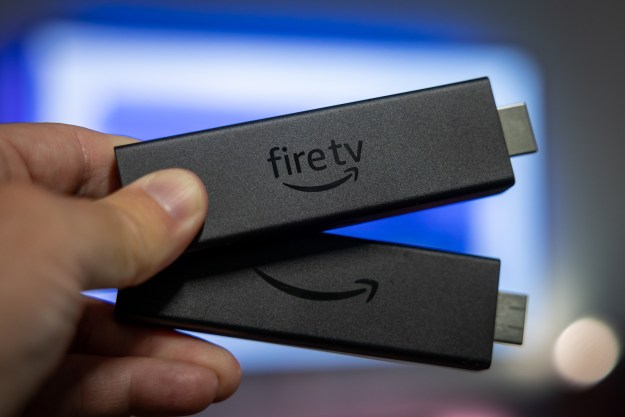
“The LG Tone Free fall short of competitors in their price range”
- Comfortable design
- Neat self-cleaning feature
- Great sound quality
- Subpar battery life
- Overly sensitive touch controls
There is seemingly no better time to release a product that kills bacteria as part of its feature set than right now. Because of that, LG really should get credit for its excellent, if coincidental timing of the release of the Tone Free HBS-FN6.
Of course, it’s never a good time to release a product that doesn’t match up to the competition in crucial areas, and LG deserves the credit for that, too, whether it wants it or not. The $150 Tone Free HBS-FN6 do a few things that most other true wireless earbuds don’t, but failed to make an impact in the places that mattered most.
Before I break it down, a quick clarifying note: There are three different Tone Free models, the HBS-FN6, HBS-FN5W, and the HBS-FN4, each with incremental differences. I’ll be reviewing the HBS-FN6 and for the purposes of this story, I’ll refer to that product as the Tone Free unless otherwise stated. Alright, let’s get on with it.
Out of the box
Everything about the LG Tone Free earbuds are petite, right down to the packaging in which they arrive. Under the lid of the predominantly white box are the buds and their case, with a separate compartment beneath them housing a USB-C charging cable, extra eartips, and a surprisingly thorough manual. I say surprisingly only because I’ve seen a decent number of guides that have been largely short on details. It may be a little old school but having something tangible to walk you through operating these buds is a welcome inclusion that sometimes gets lost in the mix with competitors.

The Tone Free have a Fast Pair feature similar to Google’s Pixel Buds 2 or Apple’s AirPods, where the earbuds seemingly find your phone before it can find them, though it’s limited to devices that support Android 5.0 or higher. If you don’t have a device that fits that description, you can go the more traditional route and find the earbuds in your phone’s Bluetooth settings to make the connection.
The Tone Free have Bluetooth 5.0 technology, and like most earbuds I’ve reviewed with this tech built-in, were issue-free when it came to solid connections. I was able to freely move around the house, or even into the backyard, while my phone remained stationary.
Design
As has been the case with so many pairs before them, the Tone Free were made — at least in part — in the image of the Apple AirPods. After all, Apple made the concept of wearing golf tees in your ears the hip thing to do, with competitors simply following the trend. The Tone Free are slightly bulkier (about 5 grams compared to the 4-gram AirPods) and only come in black for now, but the visual similarities are apparent enough.

I really like how compact the charging case for the Tone Free is. It’s actually a shade lighter (at 39 grams) than the AirPods’ 40-gram charging case, and I personally prefer the round design of the Tone Free case. That may be an unpopular opinion since Apple’s Zippo lighter-shaped case has been copied by many manufacturers following it. But I’d absolutely take LG’s circular case in a stow-and-go situation over the AirPods, though neither will present much of a problem in that regard.
The Tone Free are comfortable, fitting tightly in my ears without putting too much pressure on my ear canals.
The Tone Free are comfortable, fitting tightly in my ears without putting too much pressure on my ear canals. The only times I physically adjusted them during morning walks or afternoon jogs was to utilize the buds’ auto-pause feature when passing other individuals. I could have used the earbuds’ Ambient Sound Mode to get around having to remove a bud, but I found that just pulling them out was an easier method than trying to use the buds’ multi-touch controls while in motion.
Speaking of those multi-touch controls, I will be the first to admit that it’s not easy to get this style of control right. Many buds that employ this feature fall somewhere between too sensitive to the touch or not sensitive enough. I think the Tone Free are functional — with multi-press options for answering or ending phone calls, switching through music, or changing the volume – but they do err closer to the “too sensitive” end of the spectrum. They aren’t as bad in that regard as others I’ve tested, but it still made for a handful of frustrating moments.
Features
When it comes to their feature set, the Tone Free are a bit of a mixed bag. They do have the distinctive self-cleaning feature, one that on its own makes these buds intriguing, but when you broaden the scope and examine the more standard, yet arguably more important features, the intrigue is all but lost.

First, let’s hash out the uniqueness of these earbuds. The Tone Free are self-cleaning buds, thanks to a UVnano charging case that LG says kills 99.9% of bacteria while the case is connected to a charging cable. The case uses ultraviolet light focused on the buds’ eartips, though the process won’t remove dirt, debris, or earwax.
On the one hand, this is objectively cool. Especially during a time when most folks are as focused as ever about cleanliness, having buds that kill bacteria by themselves can only be a good thing. On the other hand, this all seems wildly unnecessary. Like what I assume are many of you, I was never overly concerned with how much bacteria were on my earbuds. Maybe LG is leading the charge here and uncovering an issue we didn’t previously know was a problem, and maybe future earbuds will follow in the Tone Free’s footsteps. Then again, maybe not. It’s a feature that the average person can’t tangibly feel the effects of, and it’s the main reason these buds are $50 more than the Tone Free HBS-FN4. That seems like a big expense for a largely invisible perk.
When it comes to their feature set, the Tone Free are a bit of a mixed bag.
Battery life in the Tone Free is up to six hours, with two extra charging cycles included in the case for a grand total of 18. Additionally, they have a quick-charging feature that gives you an hour of playback after five minutes in the case. Two years ago, this would have been solid. Now, unfortunately for LG, it’s mediocre at best. The RHA TrueConnect 2, for the same price, provides 9.5 hours of playback in a single charge, with 44 total hours of battery life with its case. Seeing as the Tone Free began showing low battery right around the five-hour mark and barely approached their quoted six-hour lifespan, it’s hard to see why you wouldn’t opt for a clearly stronger battery in the RHA.
And while the Tone Free do offer an IPX4 weather resistance rating — a pretty standard benchmark for earbuds that gives them solid protection against sweat and water splashes from any direction — the TrueConnect 2 raised the bar by tossing in dust protection with an IP55 rating. You probably won’t need that kind of protection in your everyday life. But at the same time, why wouldn’t you choose this route if it didn’t cost you any more? That’s the problem LG is up against. Their features are fine if you don’t put them side-by-side with an evenly-priced competitor. In that scenario, it’s hard to find an area that clearly favors the Tone Free. Unless you wanted to limit the number of bacteria you subject your ears to.
Audio quality
Just like their recent soundbars, LG is touting its partnership with Meridian in tuning the sound of their products. Also in line with those soundbars, LG has kept quiet about specs on the actual drivers in these earbuds. From the sound of the company’s talking points, we’re not supposed to worry about the details or the design of the components producing the sound we’re hearing. Instead, we’re supposed to blindly rely on the fact that Meridian took the reins with the audio quality of this product, and trust in the company’s Headphone Spatial Processing (HSP) technology to deliver solid sound.

Which, I must admit, it does very well. Just like the soundbars that Meridian had a hand in, the Tone Free do produce an enjoyable listening experience. According to LG, Meridian’s HSP tech is meant to “create a realistic soundstage that simulates the experience of listening to real loudspeakers.” I wouldn’t go nearly that far, but after listening to selections like Led Zeppelins’ Ramble On or The Rolling Stones’ Gimme Shelter, I do appreciate the stereo separation and vocal clarity that these earbuds were able to create.
With the LG Tone Free app, you can choose between three other Meridian presets — Bass Boost, Natural, or Treble Boost — or customize the sound to your own taste with an in-app equalizer. While LG’s effort to make its sound customizable for ears of all kinds is recognized, with presets like Bass Boost filling in the needed low end for more modern tracks, I did prefer the sound of the default preset called “Immersive.”
The Tone Free have done a good job of creating enjoyable sound.
I will say this, however: The Tone Free have done a good job of creating enjoyable sound, but at the same time, they haven’t created incredibly distinguishable sound. I’d have a hard time deciding whether these buds sounded better than, say, the RHA’s I listened to last week or the Google Pixel Buds 2 I auditioned a few months ago. Touting the ability to kill bacteria as a key feature that just isn’t all that exciting, the Tone Free really needed their sound to set, well, a tone. They do sound very good, just not good enough to cover for their other shortcomings.
The call quality of the Tone Free is sufficient, thanks to the dual-microphone setup that LG built into the Tone Free. LG says it uses technologies dubbed Echo Cancellation and Noise Reduction to detect and minimize unwanted noise, which it does reasonably well. Just don’t expect these traits and the minimal passive noise cancellation created by the fit of the buds to mirror the kind of experience that true active noise cancellation provides. Try as they might, these ANC substitutes don’t touch the real deal.
Our take
The LG Tone Free do not do anything particularly poorly, they just don’t do most things quite as well as some of the more notable competitors in their price range. Winning out on all the major touchpoints is a tough feat to accomplish with as fast as things are moving in the world of true wireless earbuds, but if you can’t at least stay on par with the rest of the field, you won’t be making the leaderboard.
Are there better alternatives?
The Tone Free may have a slight edge in sound, but not enough to overlook everything else the RHA TrueConnect 2 does better for the exact same $150. For $50 more, I’ve grown into quite a fan of the $200 Sony WF-SP800N, which improves battery life over both the LG and the RHA, and adds effective active noise cancellation.
Honestly, I would probably take the cheaper, $99 LG Tone Free HBS-FN4 over the FN6, since the main difference is the self-cleaning charging case in which we found marginal value.
How long will they last?
These buds do seem to have a quality build to them and moderately good protection against the weather. I don’t foresee them breaking down soon.
Should you buy them?
Nope. I liked the design of these earbuds, plus their palatable sound, but there are too many options in this price range with better features to be able to recommend the latest from LG. The Tone Free may be able to eliminate most bacteria that comes their way, but they don’t have the same effect on the tough competition surrounding them.
Editors' Recommendations
- Google Pixel Buds A-Series hands-on review: Same buds, way better price
- LG’s new true wireless earbuds self-sanitize when you charge them. Really
- LG’s Tone+ Free are true wireless earbuds for germaphobes




